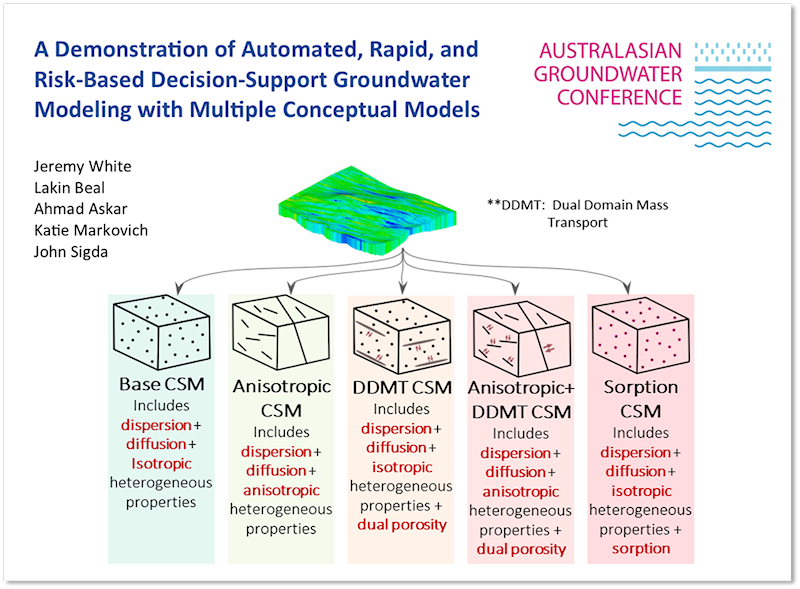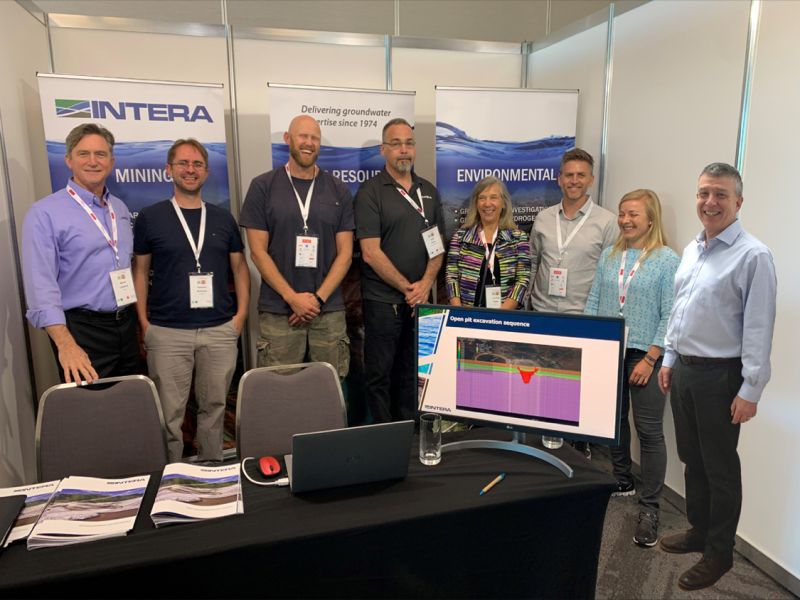INTERA team members enjoyed seeing many of our friends, clients, and vendors at the Australasian Groundwater Conference in Perth, Australia. A variety of informative presentations were given, and our team members enjoyed learning from other experts in the industry, and our own knowledge and expertise associated with providing technical support for mining companies. Here are a couple of highlights of INTERA presentations:
Poster – A Demonstration of Automated, Rapid, and Risk-Based Decision-Support Groundwater Modeling with Multiple Conceptual Models

INTERA presented a demonstration of a probabilistic decision-support tool that combined open-source groundwater modeling and uncertainty analysis utilities (MODFLOW-6, PyEMU, and PEST++). The primary function of the tool was to assess the risk and associated uncertainty of mining-related contaminants crossing the site boundary in 100 years, using various site conceptualizations with differing model parameters. An automated workflow was developed to calibrate several categorical conceptual site models, and assess and optimize select remediation technologies based on a large set of solute egress predictions at the site boundary. This automated, script-driven, workflow performed the bookkeeping, dataset updates, and applicable conceptual element revisions, and our team focused on quantifying the interrelationships between the conceptual models and the predictive uncertainty associated with conservative estimates of risk. The full poster can be found here.
Paper – Probabilistic Contaminant Source Assessment – Getting the Most Out of Field Measurements
Stochastic source attribution is a methodology for undertaking probabilistic investigations into the locations at which contaminants have leaked into a groundwater system. Using a large number of history-matched, stochastic parameter fields, probability maps of where contaminants may or may not originate can be drawn. This approach enables optimization of monitoring network designs to maximize the value of collected data towards reducing contaminant source uncertainty, while minimizing costs. This paper was published in the National Ground Water Association journal and can be viewed here.


